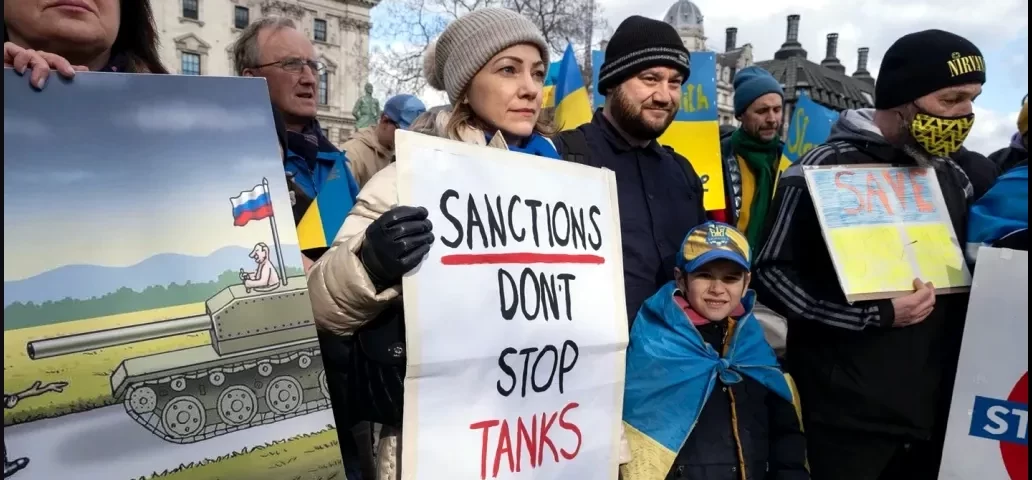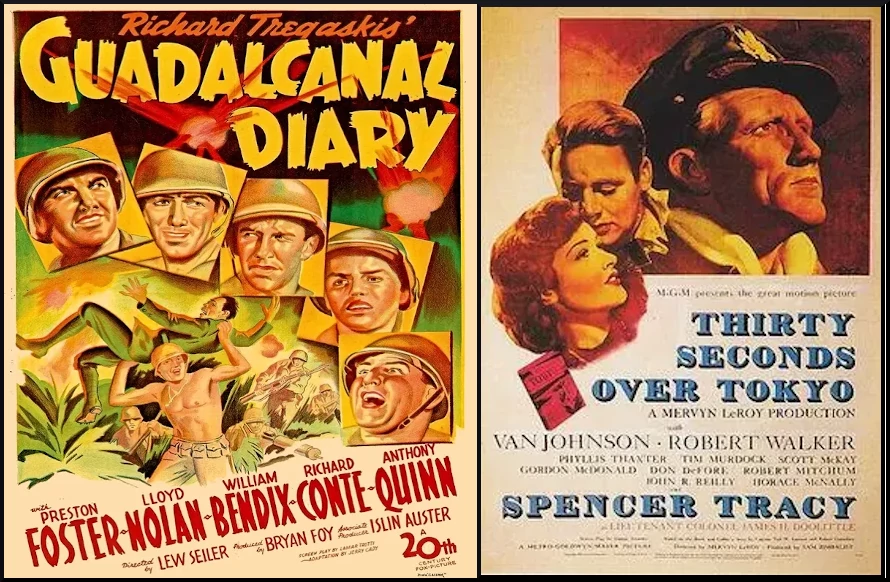by Jack Gilroy, published on Covert Action Magazine, April 8, 2022
The U.S. media have been saturated by reports of Ukrainian suffering since the Russian invasion of February 24, 2022, and of heroic Ukrainian resistance. Even progressive media outlets and politicians have favored more arms supplies to Ukraine in this climate.
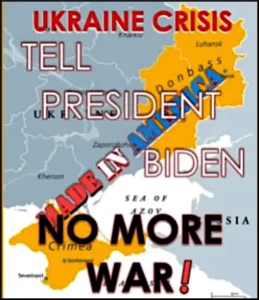
But will these weapons actually end the war by contributing to the defeat of the Russians, or will they prolong it and deepen the suffering of the Ukrainians?
The answer appears to be the latter. Only compassion and compromise will end the suffering, not more killing and wounding, not more millions of refugees and devastation.
Unfortunately, the American media have helped condition the public through its one-sided coverage to support sending more weapons to Ukraine and to deprioritize negotiation and compromise—even if only the latter can help end the suffering and misery of the Ukrainian people.
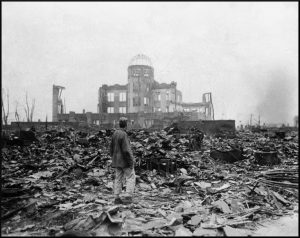
As a child of World War II, I loved the war. Saturday was movie time and some of the films my friends and I watched with excitement were Guadalcanal Diary, The Bombardier, Thirty Seconds Over Tokyo. These stories left us with no empathy for German or Japanese families, victims of 4000-pound bombs that destroyed whole neighborhoods and were proudly called “Blockbusters.” Conversely, we felt pride in our fighting forces for destroying an enemy that threatened our comfortable existence.
On the dirt playground of our schoolyard, the favorite game of the boys was a hopscotch-like game we called “War.” We would scratch blocks in the dirt and write in names of countries (Germany, Japan, Morocco, Italy, Russia, China, etc.) in each large block, then hopping on one leg, declare war on a country and pitch the stick into Albania or Egypt, etc., and hop to that block, pick up the stick, still on one leg, and declare war on another nation.
That was in a time when Congress actually voted to declare war. That has morphed into Congress simply voting for money to be used by the authority of one man, the sitting President. No compassion, no negotiations, no compromise—a debate in the House and Senate and a vote for appropriations to conduct the President’s war. No declaration is needed.
I was ten years old when my country used an atomic bomb to incinerate people in Hiroshima and I thought that was terrific. After the second nuclear attack on Nagasaki and the eventual surrender of Japan, I joined hundreds of kids and adults in an unplanned parade in our little Pennsylvania town as I pushed a wheelbarrow containing my pal, Harry, as he waved a small American flag at the cheering crowd.
At 17, I joined the U.S. Navy Reserves while in high school and hitch-hiked to weekly training sessions sixteen miles away. After high school, I asked for a discharge from the Navy to enlist in the U.S. Army. The Cold War was on and I knew for sure the Soviets were evil people. My Catholic Sisters taught of the wickedness of the Godless Communists.
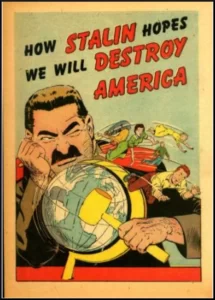
At age 19, I found myself in the Tyrol mountains of Austria with the 350th Infantry Regimental Combat team prepared to fight the Soviet Union, our former ally in World War II. Austria was divided into zones occupied by Americans, French, British, and Soviet troops.
I was unaware that political negotiations to make Austria a neutral state were ongoing for years. In April 1955, I was selected to be part of a team of 50 infantrymen to participate in the Vienna ceremony to end occupied Austria.
Our train was stopped by the Soviets as we entered their zone. It was my first encounter with Soviet soldiers as they inspected our M1s to be certain they were not loaded. I found them neither unfriendly nor threatening.
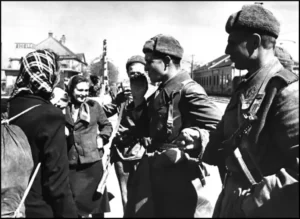
Our Colonel told us we were to look lean and mean to the Soviets. Our hair was cut very short, not to show under our steel helmets. We were instructed to look into the eyes of our Soviet counterparts and stare hard and “think the worst of them—let them know they are scum.”
At the ceremony were the infamous Dulles brothers, John Foster and Allen.
On May 15, 1955, led by a military band, we marched in cadence to a large sewer plate in the middle of Vienna’s Schoenbrunn Palace. It was here that a salute from the Soviet Colonel and a salute from our American Colonel would mark the end of foreign occupation of Austria. The Austrian State Treaty declaring their nation as a new neutral nation would begin with that final change of guard of Vienna by American and Soviet forces.
As the bands played—first the Soviet national anthem and then the American national anthem—we were to do our stare. I looked into the eyes of my Soviet counterpart and saw nothing but sadness. His eyes, like mine, were blue. His hair, like mine hidden under my helmet, was blond. I saw no threat, no evil, just a young man who was likely a year or two younger than me, perhaps 17.
That late afternoon, I walked to the USO along the Danube and looked across the river to the Soviet zone. Much of the area was still in rubble from bombings by the Americans and Brits ten years earlier. A bomb-damaged Ferris wheel, in the amusement park called The Prater, stood out.
A look toward the International and American zone was dramatically different. Construction cranes were busy swinging steel beams into place and much of the city had already recovered from the blockbusters and other bombs dropped from sorties of 500 or more planes on numerous occasions from September 1942 to April 1945.
Austrians in the zones other than the Soviet zone accepted Marshall Plan money to rebuild. Once the Soviet forces left Austria in the months after the May 15 Austrian State Treaty, the former Soviet zone quickly rallied and rebuilt.
The Austrian State Treaty came as a surprise to the West. History books in the United States make little of this Soviet concession to leave Austria. For the Soviets, Austria as a neutral state was a strategic win. As a demilitarized buffer state, Austria would help thwart Western invasions of mother Russia.
Historically, Russia and the Soviet Union have been invaded multiple times by the West. From Napoleon’s burning of Moscow in 1815 to the German declaration of war against Russia in 1914 (even the Americans invaded Russia in 1919 after the Bolshevik Revolution) followed by the largest invasion force in history with three million German troops invading the USSR in 1941. The USSR was crushed across a 1,000-mile front; no nation in history recorded as many deaths as it did with estimates of 20 million dead and its homeland laid waste by the “West.”
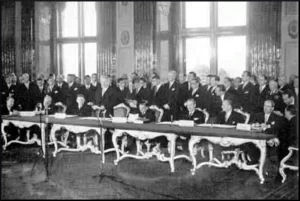
Casual observation of healthy children in schools and in the streets brought back memories of our live-fire exercises along the Soviet-controlled Czech border in the winter of 1955. We were doing a war exercise with live ammunition and piles of spent 30 caliber shells from our water-cooled and air-cooled machine guns were piled up at our various positions of fire.
During a lull in our activities, a woman in a long coat and babushka emerged from the woods with two children. There was still some snow on the ground but her 12-year-old boy wore shorts and the little teenage girl had a dress and a light sweater.
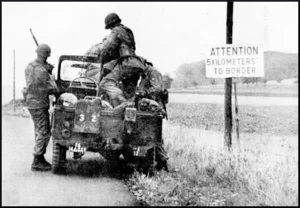
Today, neutral, non-militarized Austria is ranked the fourth healthiest nation in the world after South Korea, Taiwan and Denmark.
Economically, the World Bank shows Austria with a stronger per capita income than that of prosperous Canada.
Ukrainians have so far succeeded in resisting Russian military advances and are intent on remaining an independent nation—which it should continue to be but not in the same context as pre-invasion.
A Western Ukraine, neutral, free from Russian troops, with Kyiv remaining the capital, should be drawn by agreement with the Russian government. The Biden administration in turn should support this.
It is time for a reasonable, peaceful agreement that would remove all NATO considerations in Ukraine. Admission of the new nation of Western Ukraine into the European Union would follow Austria, Sweden and Finland as EEC neutral nations in a buffer zone easing Russia’s justified paranoia of historic Western aggression.
As part of any diplomatic settlement, Ukraine should allow Eastern Ukraine to be autonomous and sustain its close cultural and economic ties with Russia.
Two Ukraines could ultimately work. Creation of a demilitarized Eastern and Western Ukraine would halt the bloodshed that at this moment in history is unrelenting.
The elephant in the room, however, is whether the U.S. will allow such a fair and just settlement to the conflict.
The military-industrial complex benefits from sustaining the conflict and having Russia as a bogeyman and enemy of the U.S. that can justify huge military budgets. In a recent article in The Grayzone, Alex Rubinstein detailed how Ukraine has become a major arms bazaar and mecca for mercenary fighters, writing that the U.S. foreign policy elite yearns for an “Afghan-style insurgency in Ukraine.”
The article included a quote from former special adviser to the Secretary of Defense Colonel Douglas Macgregor who said:
“It looks more and more as though Ukrainians are almost incidental to the operation in the sense that they are there to impale themselves on the Russian army and die in great numbers, because the real goal of this entire thing is the destruction of the Russian state and Vladimir Putin.”
These comments suggest that Ukraine is being used as a pawn in the new Cold War and that the U.S.—just as in World War II and the original Cold War—stands as a major impediment to a diplomatic solution that would ease the plight of the Ukrainian people.
*Featured Image: Anti-war protester with sign calling for sending more Javelin anti-tank missiles to Ukraine. [Source: forbes.com]
Jack Gilroy is an anti-drone activist, antiwar activist and all round peace and justice activist. He is active with Veterans for Peace, Ban Killer Drones and Pax Christi. His plays and novels focus on young men and women who resist war. You can read more at www.bensalmon.org. Jack can be reached at: jgilroy1955@gmail.com.
